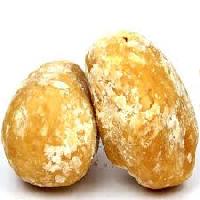The Journey of Sugarcane: From Harvest to Everyday Products
The journey of sugarcane is a complex process that begins with thorough growing and finishes in a range of products that penetrate our daily lives. As we discover the different elements of sugarcane's journey, its role in sustainability and the wider implications for our setting come into sharper emphasis.
Cultivation of Sugarcane
The farming of sugarcane is an essential agricultural procedure that requires details environmental problems and monitoring practices. Optimal growth takes place in subtropical and tropical areas where temperature levels range in between 20 ° C and 32 ° C. Adequate rainfall or irrigation is essential, as sugarcane prospers in moist soil with well-drained problems (sugarcane product). Soil high quality significantly influences return; thus, farmers typically perform soil examinations to determine nutrient demands
Growing typically happens in rows, making use of stem cuttings known as setts, which are planted flat. This approach helps with effective gathering and makes best use of sunlight exposure. Crop turning and intercropping are advised practices to improve soil fertility and lower parasite infestations. Farmers employ integrated pest management techniques to lessen chemical inputs while making sure healthy and balanced plant growth.
Fertilizing is an additional essential facet, with phosphorus, potassium, and nitrogen being the main nutrients required for optimal development. Prompt application of these plant foods can substantially improve sugar yields. Additionally, monitoring for conditions and bugs throughout the expanding season is important, as these elements can adversely influence crop health and performance. Generally, successful sugarcane cultivation rests on a combination of environmental stewardship, critical planning, and ongoing monitoring methods.
Gathering Techniques
Effective sugarcane cultivation finishes in the gathering stage, which is critical for maximizing yield and making sure quality. The timing of the harvest is critical; sugarcane is normally harvested when sucrose degrees optimal, normally between 10 to 18 months after growing. This period differs based on environment, dirt kind, and sugarcane selection.
Collecting methods can be generally categorized into manual and mechanical techniques. Manual harvesting is labor-intensive, relying upon proficient workers that use machetes to cut the stalks close to the ground. This technique permits careful harvesting, where only the ripest walking sticks are picked, consequently improving general sugar web content.
On the other hand, mechanical harvesting has gotten appeal due to its efficiency and cost-effectiveness. Specialized harvesters geared up with reducing blades and conveyor systems can process big locations promptly, substantially reducing labor expenses. This approach may lead to the inclusion of premature walking canes and a prospective reduction in sugar quality.

No matter the method utilized, guaranteeing that harvested walking canes are moved swiftly to refining centers is vital. Trigger dealing with decreases putridity and maintains the integrity of the sugarcane, establishing the stage for optimal processing.
Processing Methods
Handling sugarcane includes numerous essential actions that change the collected stalks right into useful items, mostly sugar and molasses. The initial stage is cleaning the walking cane to remove dirt and debris, adhered to by the extraction of juice with squashing or milling. This process normally employs hefty rollers that break the cane fibers to release the sweet fluid had within.
As soon as the juice is extracted, my company it undergoes explanation, where contaminations such as dirt bits and bagasse are eliminated. This is commonly achieved by adding lime and heating the juice, permitting sedimentation. The made clear juice is then focused through evaporation, where water content is decreased, resulting in a thick syrup.

Eventually, the processing of sugarcane not just produces sugar and molasses however likewise lays the groundwork for different by-products, which will be checked out in succeeding discussions.
Products Derived From Sugarcane
Sugarcane is a flexible plant that yields a broad selection of products beyond simply sugar and molasses. Amongst the key by-products are ethanol and biofuels, which have actually obtained prominence as sustainable power resources. Ethanol, generated with the fermentation of sugarcane juice, acts as an alternative to fossil fuels and is commonly combined with gasoline to create cleaner-burning fuels, minimizing greenhouse gas exhausts.
Furthermore, sugarcane is a significant source of bagasse, the fibrous residue staying after juice extraction. Bagasse is used in different applications, consisting of the manufacturing of paper, naturally degradable packaging, and as a biomass gas for energy generation. Its use not just decreases waste yet also enhances the sustainability of sugarcane processing.
In addition, sugarcane-derived products extend to the food market, where it acts as a natural flavoring agent and sweetener in numerous cooking applications. In the realm of cosmetics, sugarcane extracts are incorporated right into skin care products due to their all-natural exfoliating residential or commercial properties.
Environmental Influence and Sustainability
The growing and processing of sugarcane have my website significant effects for environmental sustainability. This crop calls for considerable water resources, usually bring about exhaustion of local water products and impacting surrounding ecosystems. In addition, using plant foods and chemicals in sugarcane farming can result in dirt degradation and river contamination, posing dangers to biodiversity.

Sustainable sugarcane farming additionally advertises soil wellness through crop turning and lowered tillage, improving carbon sequestration. The fostering of special info these practices not only sustains ecological integrity however additionally improves the durability of farming neighborhoods versus climate change.
Final Thought
In recap, the trip of sugarcane encompasses different phases from farming to handling, ultimately leading to a large selection of items. The significance of sugarcane prolongs past simple sugar, adding to renewable energy through ethanol production, sustainable packaging by means of bagasse, and all-natural removes for cosmetics. This complex plant plays an essential function in both dietary enrichment and environmental sustainability, highlighting its value in modern farming and commercial techniques.
Effective sugarcane farming finishes in the collecting stage, which is crucial for making the most of yield and guaranteeing high quality. The timing of the harvest is important; sugarcane is normally gathered when sucrose degrees height, normally between 10 to 18 months after planting.Processing sugarcane involves numerous vital actions that change the gathered stalks into usable items, largely sugar and molasses.Sugarcane is a functional crop that yields a wide selection of items beyond just sugar and molasses. In addition, the usage of fertilizers and pesticides in sugarcane farming can result in soil deterioration and waterway air pollution, posturing risks to biodiversity.
 Jonathan Taylor Thomas Then & Now!
Jonathan Taylor Thomas Then & Now! Brandy Then & Now!
Brandy Then & Now! Batista Then & Now!
Batista Then & Now! Christy Canyon Then & Now!
Christy Canyon Then & Now! Rossy de Palma Then & Now!
Rossy de Palma Then & Now!